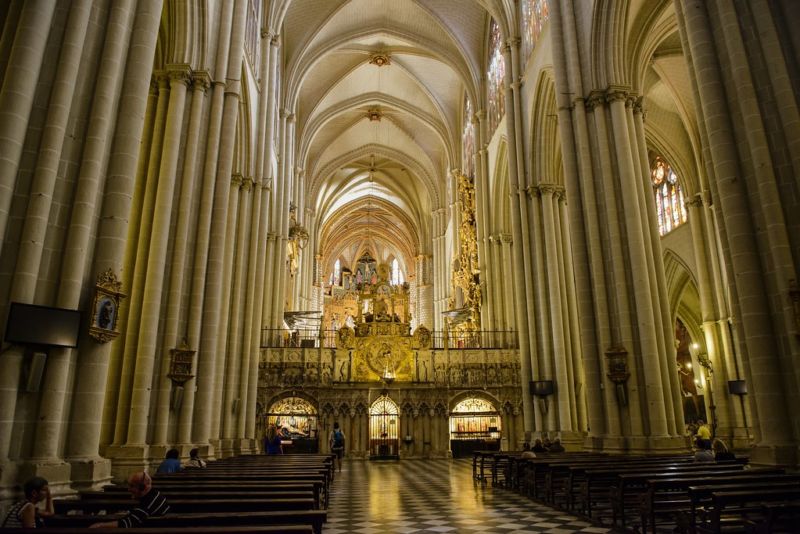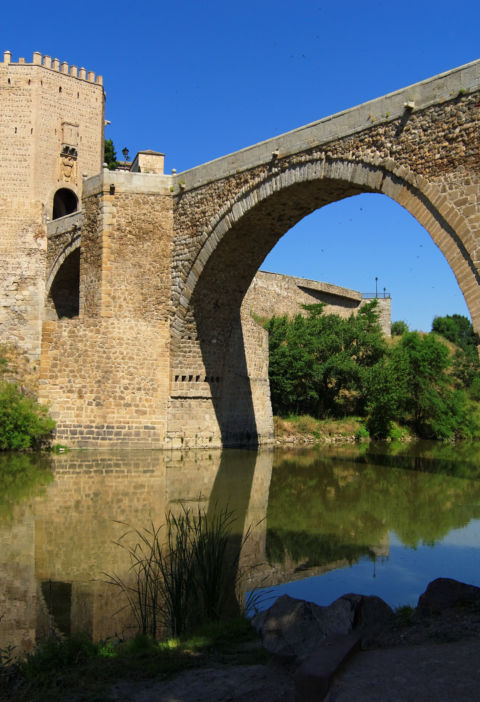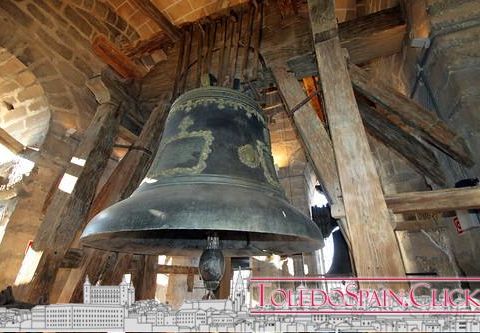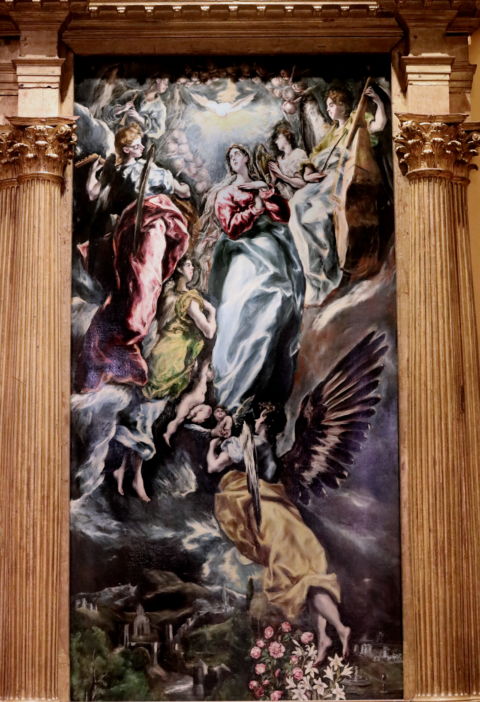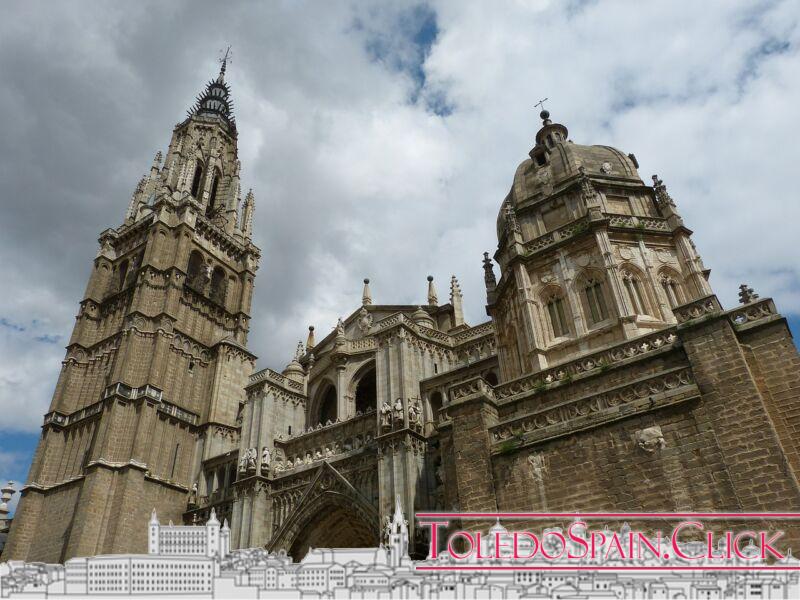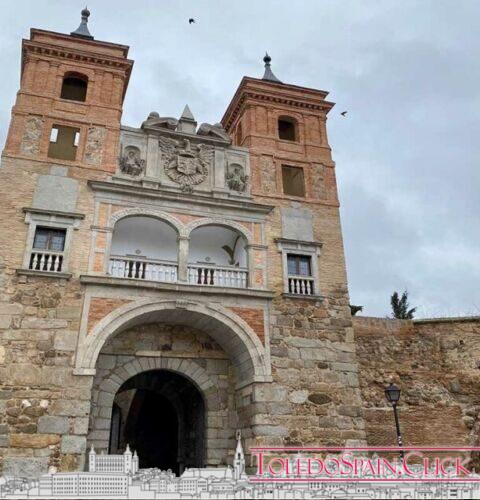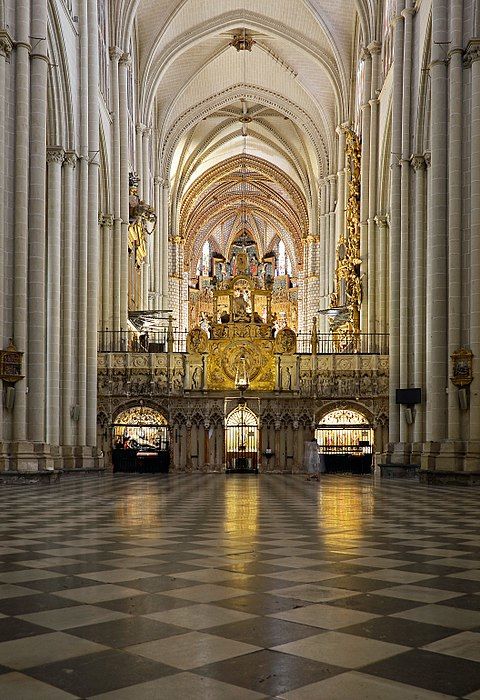Planning a visit to Toledo? Here we share twenty-one monuments and places that we consider essential in a visit to the city. There are many others, sure, but it’s a good starting point. And in one day it’s impossible.
Look for a good hotel and spend a weekend, at least in Toledo. Updated August 2020!
They are not in a special order, you choose the best way to visit these monuments and which ones interest you the most.
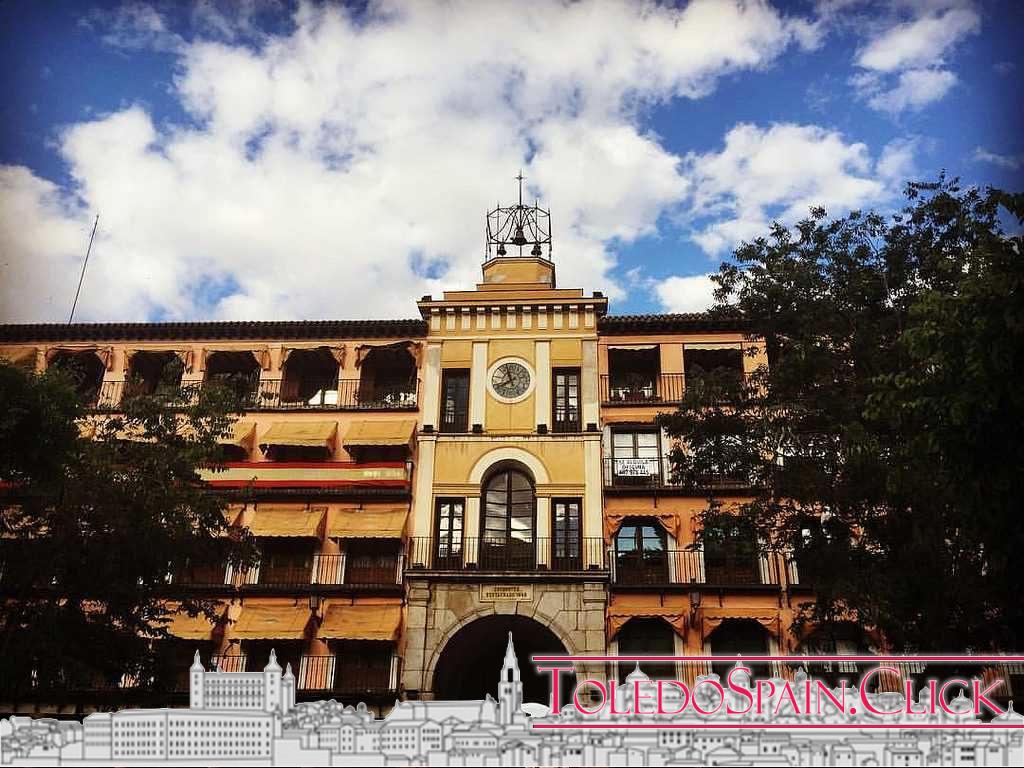 Plaza de Zocodover on a rainy day.
Plaza de Zocodover on a rainy day.
Index of Contents
Zocodover Square
One of the main meeting points in the city of Toledo is Zocodover Square. Juan de Herrera participated in its construction during the reign of Felipe II. Its name comes from the Arabic: sūq ad-dawābb (which means “market of the beasts” ).
In this square were celebrated festivities, bullfights, games and even it was the zone where the brazier of the Inquisition was installed, being in addition the zone where they celebrated the autos de fe and the public execution of the inmates.
Throughout history, in this square, several reforms were undertaken, such as the expansion that was carried out in the time of the Catholic Monarchs. Here we tell you more curiosities of this beautiful Plaza de Zocodover.
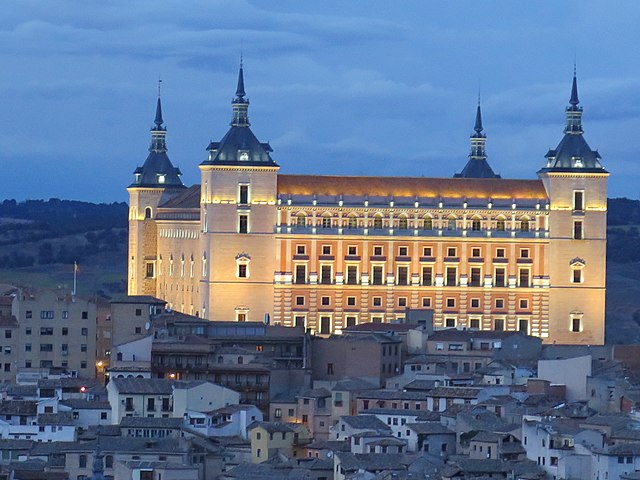 Inner courtyard of the Alcazar of Toledo
Inner courtyard of the Alcazar of Toledo
Alcázar de Toledo
Current headquarters of the Army Museum. Located in the highest part of the city. The first news we find are from Roman times, around the third century, which was a Roman palace.
It suffered restorations during the reign of Alfonso VI and Alfonso X and was modified by Carlos I in 1535.
In the SE tower, during the reign of Isabel II, the Ministry of Interior installed a telegraphic mechanism to send and receive coded messages from Madrid to Cadiz. It was also the main scene of a violent siege during the Civil War. More about the Alcázar de Toledo and in this other article we tell you some curiosities about the Alcázar.
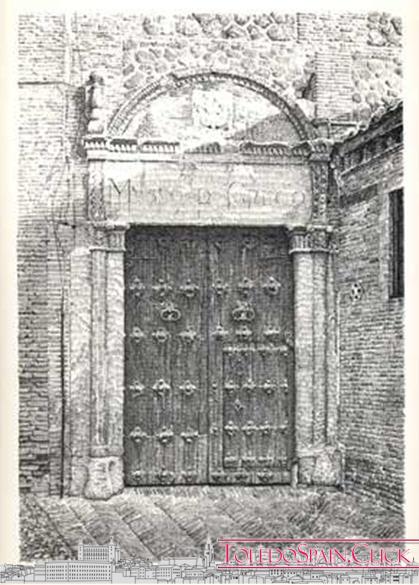 One of the courtyards of the Museum of Santa Cruz
One of the courtyards of the Museum of Santa Cruz
Museum of Santa Cruz
The old astronomical observatory of King Alfonso X the Wise was located in this area. It was also a hospital from the late fifteenth and early sixteenth century and one of the great works within the Spanish Renaissance, whose author was Alonso de Covarrubias.
Today you can visit collections, temporary exhibitions, archaeological remains… And soon, associated with it, the exhibition of modern art by Roberto Polo. Highly recommended and a must for tourists visiting Toledo. We love the Museum of Santa Cruz.
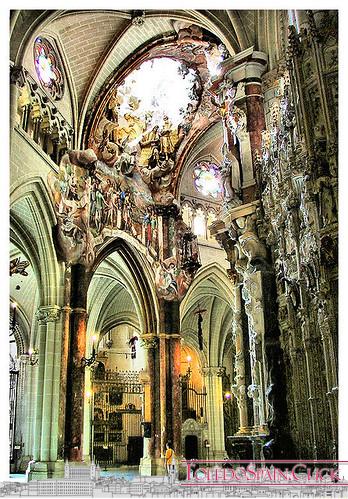 Toledo Cathedral and Alcázar from the terrace of the Hotel Santa Isabel.
Toledo Cathedral and Alcázar from the terrace of the Hotel Santa Isabel.
Toledo Cathedral
The cathedral building occupies an important location, since the Visigothic church of Santa María and the main mosque of the city during the Arab period were located in the same place. Construction began in 1227, under the mandate of King Alfonso III the Saint and Archbishop Jiménez de Rada. It is framed within the Gothic style of French influence.
The Primatial Cathedral at Toledo had a long period of construction. In fact, it was not until the 15th century that the lateral naves could be closed and it was in the 16th century when the impressive altarpiece of the main altar was built. Its construction ends in 1493 when Archbishop D. Pedro González de Mendoza closes the last vault. Here are some secrets of Toledo Cathedral.
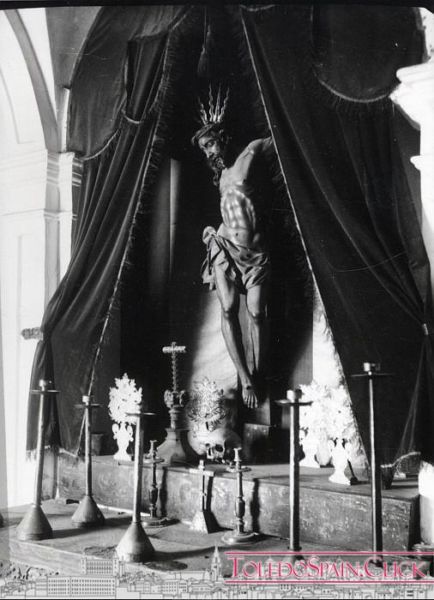 Ancient Mosque “Christ of Light“. Toledo
Ancient Mosque “Christ of Light“. Toledo
Ancient mosque “El Cristo de la Luz”
One of the best-preserved mosques, dating from 999 and one of the monuments that, although small, you should not miss on your visit to Toledo.
It was a small oratory close to one of the access doors (Bab al-Mardum), later transformed into a hermitage. One of the most famous legends is remembered in this space “the Christ of Light. The exterior grille is the work of Julio Pascual. Learn more about this mosque here.
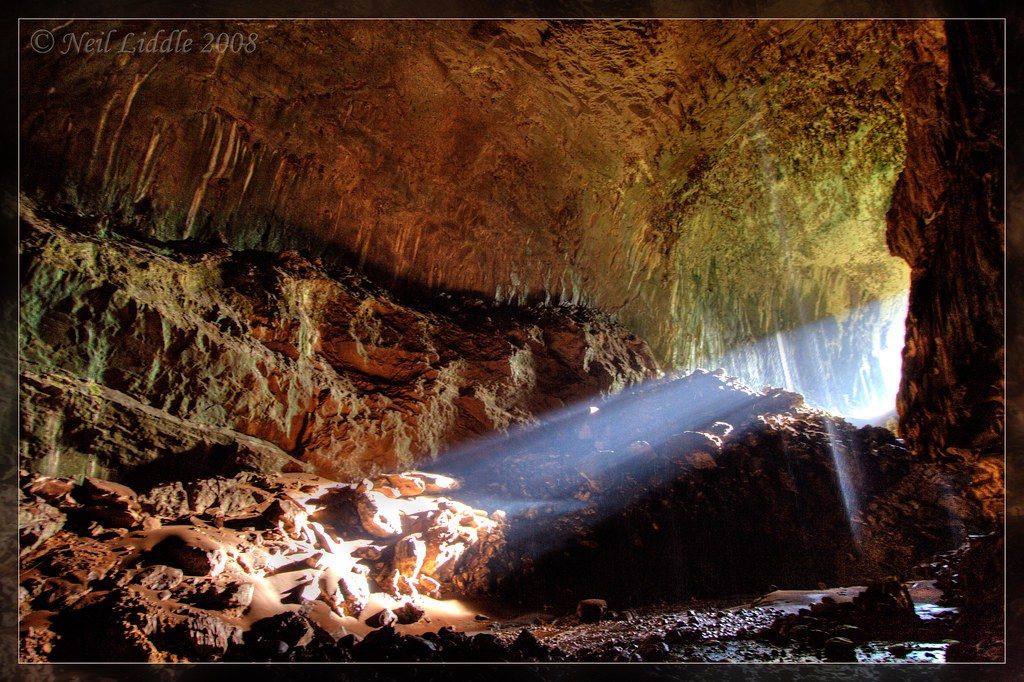 Archaeological remains of the Roman Baths of Toledo.
Archaeological remains of the Roman Baths of Toledo.
Roman Baths of Toledo
Its discovery is very recent, from 1986. They date from the end of the 1st century A.D. although there is talk of two construction processes: one that we have just mentioned and the other would date from the middle of the 2nd century A.D. These remains show us the monumentality that the city of Toledo must have had in Roman times.
They follow the example of other Roman thermal baths, with their different rooms (the caldarium, the tepidarium and the frigidarium).
Opus Caementicium was used in its construction, which was like a kind of concrete mortar. Its recently discovered extension is currently being studied. They have been put into value thanks to the Toledo Consortium.
You can visit them on some guided tours, such as “Toledo subterranean” (here) – Recently a new part of these thermal baths, called “Thermae“, are visited only with private guides, you can read here how.
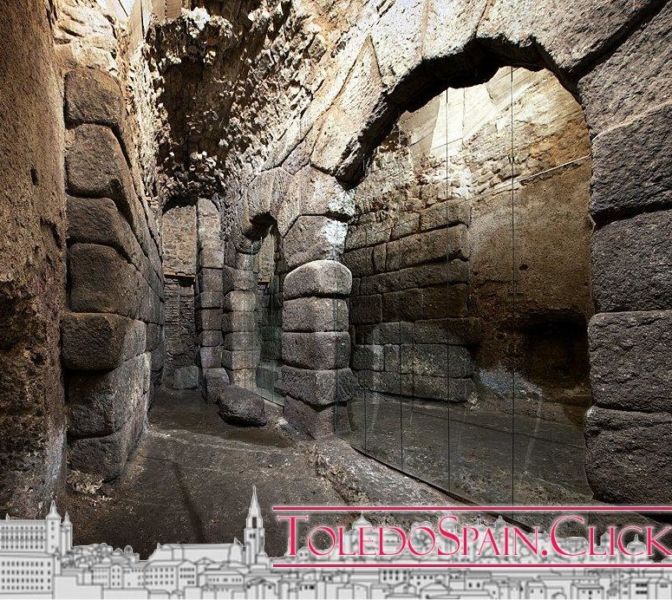 Cave of Hercules before the last restoration carried out by the Consortium.
Cave of Hercules before the last restoration carried out by the Consortium.
Caves of Hercules
A place that has been occupied by different buildings throughout history. We have data from the Roman period, when a water reservoir was built to supply the city and was also part of Toledo’s hydraulic network. The water supply in the city has always created problems due to its height.
Later, there is information about the existence, already in Visigothic times, of a Christian temple.
Also, around the 12th century, a church was built on the same site under the title of San Ginés, which was demolished around 1841. It is also a place that houses a multitude of stories and legends that you can discover in the routes that pass through this space. Legend of the Cave of Hercules.
I’m sure you’ll also be interested in: Toledo’s Tourist Bracelet
Church of El Salvador
This church was originally a mosque during the Muslim domination of the city. Located in a privileged environment of the city, near the neighborhood of Santo Tomé and the cathedral, one of the most beautiful areas of the city. In addition, this church is mentioned in the literary work of Lazarillo de Tormes.
The church, being built on top of a mosque, is oriented towards Mecca. In the fifteenth century, the church suffered a fire that left it completely destroyed forcing its reconstruction.
In 1822, it suffered a new fire that left it again devastated except for the chapel of Santa Catalina. We also invite you to discover one of the legends that relate Queen Berenguela to this church.
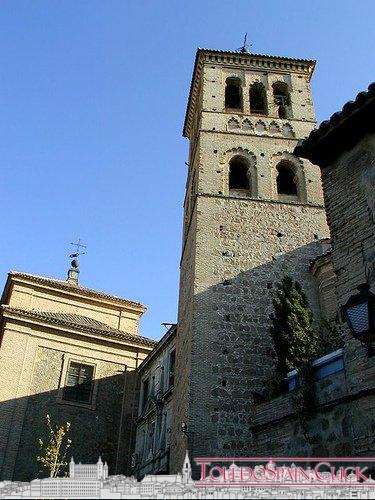 Tower of the Church of San Román, with the sculpture dedicated to Garcilaso de la Vega.
Tower of the Church of San Román, with the sculpture dedicated to Garcilaso de la Vega.
Church of San Román
If we approach the façade of this outstanding church we can see its relationship with Mudejar art. The church of San Román was built around the 13th century on top of a previous Arab mosque that existed there. In spite of it, when entering, we will be able to find remains of other cultures like the Visigoth and the Roman.
But if there is one thing that makes this church stand out, it is the paintings we can find.
We can also climb its tower, where some kings were crowned seeking to obtain heavenly and divine power at the same time as earthly power. It currently houses the Museum of Visigoth Councils and Culture. Do you want to discover the mummies of the Church of San Román?
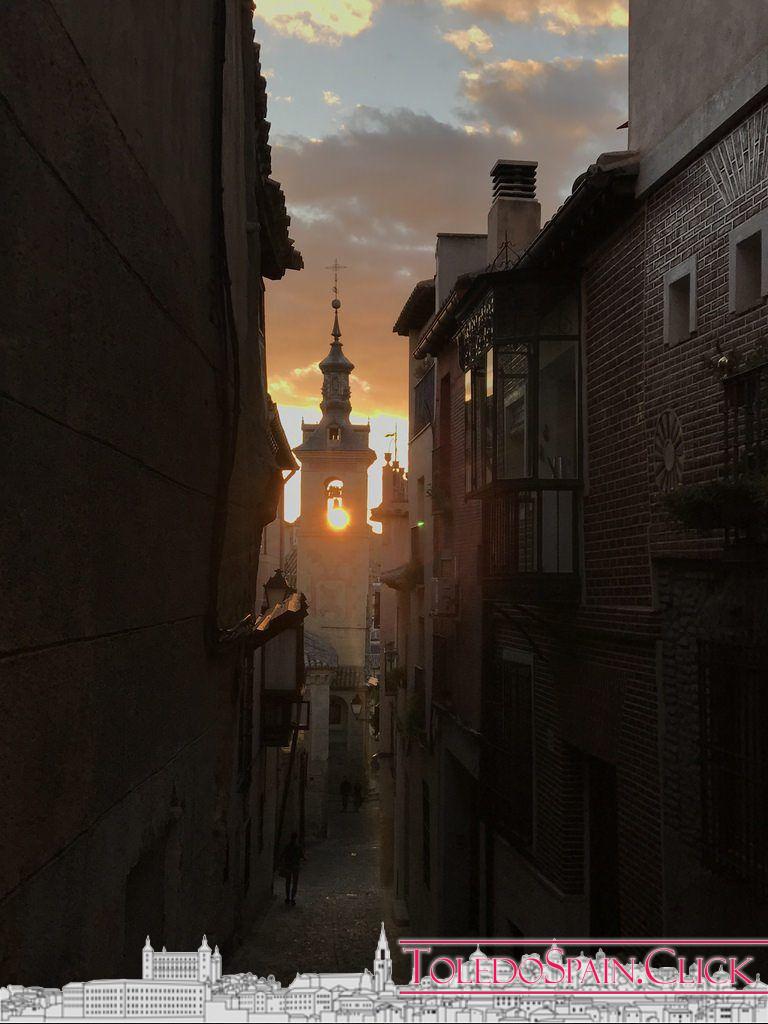 The wonderful cover of the Convent of San Clemente, which keeps a curious secret…
The wonderful cover of the Convent of San Clemente, which keeps a curious secret…
Convent of San Clemente
It dates back to the 13th century. Located just in front of the church of San Román. History has it that this convent was the cradle of the Toledo marzipan. Its main entrance to the church, made by Alonso de Covarrubias.
We can also emphasize its transcoro, very richly decorated with azulejería and that in whose sillería Felipe de Vigarny participated. It is a large convent, has several courtyards and one of its subterranean today houses the exhibition of the Templars in Toledo, fully recommended for lovers of this order.
Church of Santa Leocadia
According to history, this was the place where the house of the martyred girl Leocadia was (see her legend). We can highlight its Mudejar tower built around the thirteenth century. It may remind many of a mosque as the tower looks like an old minaret.
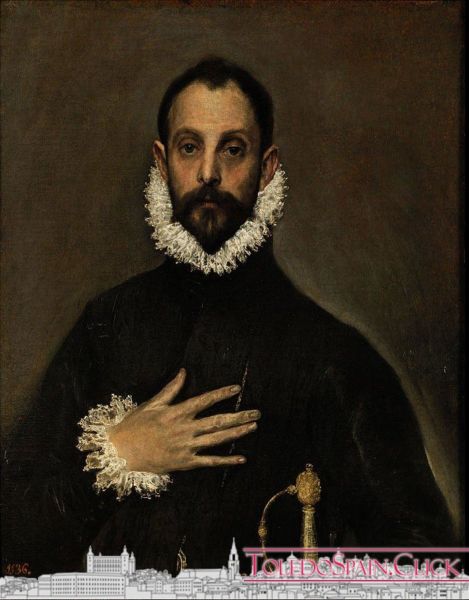 One of the altarpieces of Saint Dominic the Ancient with paintings by El Greco
One of the altarpieces of Saint Dominic the Ancient with paintings by El Greco
Convent of Santo Domingo el Antiguo
Convent built in 1577. Its traces are from Nicolás de Vergara although, later, they were modified by Juan de Herrera. The figure of El Greco, who decorated the altarpieces, was used to decorate the altarpieces. This commission was carried out by D. Diego de Castilla, canon of the cathedral.
It was one of the first commissions that El Greco carried out in the city upon his arrival.
We can also see a museum which exhibits Sacred Art composed of paintings, goldsmithery, ceramics, textiles… You can also admire the documents that are preserved signed by El Greco.
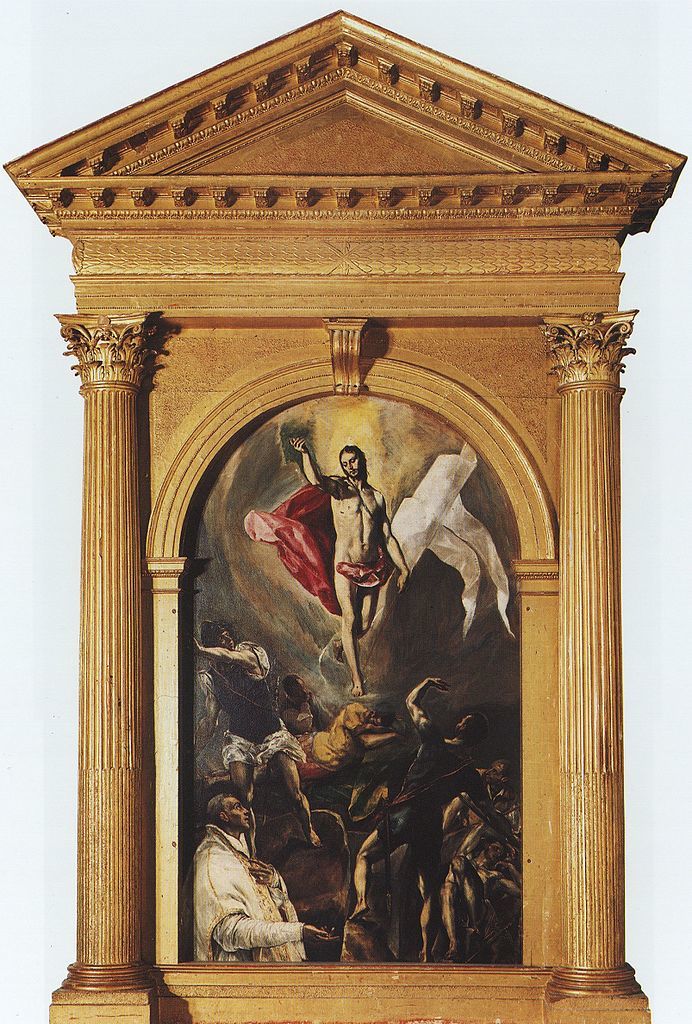 Monastery of Santo Domingo El Real
Monastery of Santo Domingo El Real
Monastery of Santo Domingo el Real
Founded around 1364. It responds to the wish of a lady, Inés García de Meneses, widow of the bailiff Sanz de Velasco.
Convent located in the collation of San Vicente. In the XIV-XV centuries it became a place of gathering of infantas and other ladies linked to the royal houses of Castile and Aragon. Inside the convent is one of the most famous mummies in Toledo: Sancho de Castilla, son of Pedro I el Cruel (nicknamed Sanchito). The restored dome of the church is worth a visit.
The square where the convent is located is dedicated to Gustavo Adolfo Bécquer, where the legend of “the three dates” by Bécquer is set. Located, without a doubt, in one of the most beautiful areas of Toledo, the sheds.
 The ancient Synagogue of Santa María la Blanca, with its new interior illumination
The ancient Synagogue of Santa María la Blanca, with its new interior illumination
Santa María La Blanca Synagogue
Located in the heart of Toledo’s Jewish Quarter. It was built at the end of the 12th century. The name comes from the church that was built at the beginning of the 15th century thanks to the Order of Calatrava. It is made up of a large basilical nave which, in turn, is subdivided into five naves.
Its horseshoe arches that divide the naves are peculiar.
As far as its decoration is concerned, we can see its clear Almohad influences since we have vegetal decoration, of geometric lacerías very typical of this culture. Finally, it closes with a Mudejar-style larch coffered ceiling. Located very close to the monastery of San Juan de los Reyes and the synagogue of Tránsito.
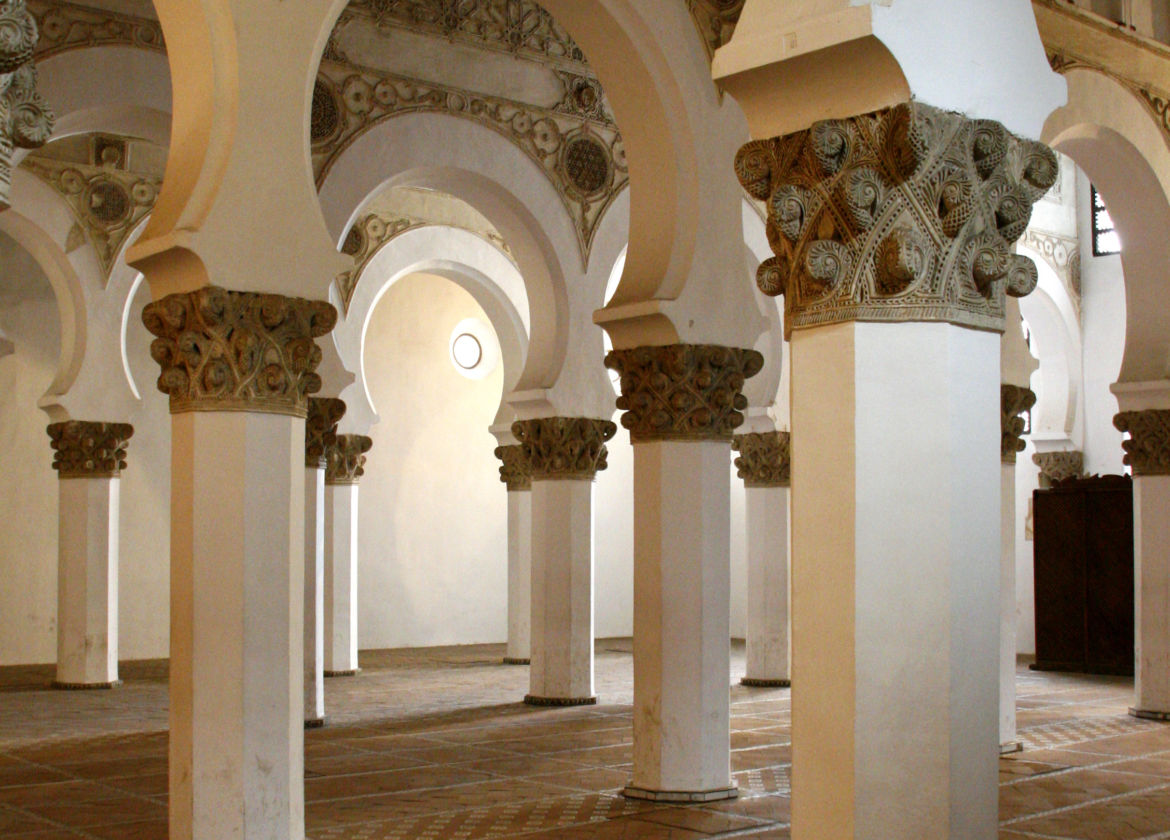 Sephardic Museum, Transit Synagogue. Toledo
Sephardic Museum, Transit Synagogue. Toledo
Transit Synagogue
It’s the most recommended synagogue in the city, which also houses the Sephardic Museum where we can see important vestiges of Jewish culture.
This synagogue is also known as the synagogue of Samuel ha-Levi and is a good representation of Hispanic Jewish art of the fourteenth century….

